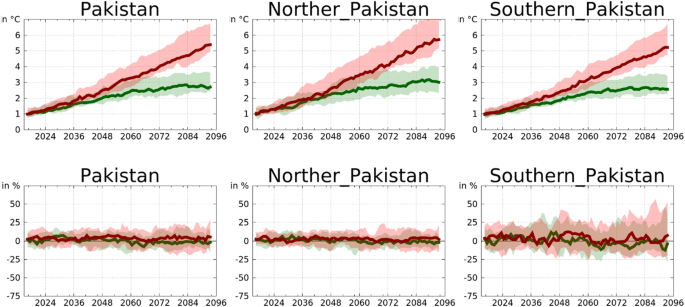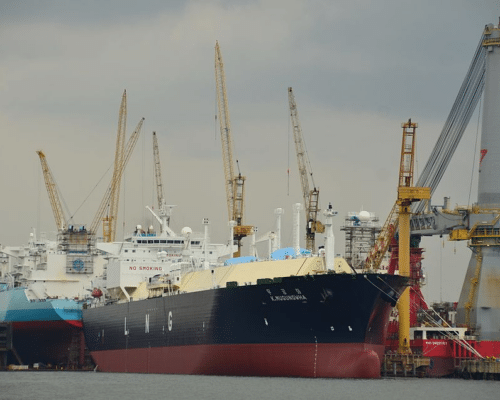Heat Wave in Pakistan 2024: A Scorching Reality
Source: The New York Times
26 June 2024 – by Eric Koons
2024 Pakistan Heat Wave
In the midst of a growing climate crisis, the heat wave in Pakistan in 2024 is pushing temperatures to new extremes. 2024’s heat wave has already been close to setting record highs, with temperatures reaching up to 52°C in Jacobabad, 44°C in Lahore and 45°C in Karachi. This follows the wettest April since 1961, underscoring the region’s recent unpredictable weather – a result of climate change in Pakistan. Temperatures are likely to increase further in some parts of the country.
Monsoon 2024 in Pakistan
Predictions show these unusually high temperatures will continue until an above-average monsoon season starts in late June of 2024. The National Disaster Management Authority (NDMA) has issued guidelines to manage the impact, emphasising the urgency of addressing this growing threat.
History of Heat Waves in Pakistan
Heat waves are not a new phenomenon in Pakistan, but their frequency and intensity have been increasing. Historically, Pakistan has faced numerous deadly heat waves and extreme temperatures, with significant ones occurring in 2015, 2018 and 2022. In 2015, Karachi experienced a devastating heat wave that claimed over 1,200 lives, with temperatures reaching 45°C. Similarly, in 2018, parts of Sindh recorded temperatures exceeding 50°C, causing widespread health emergencies and disruptions.
The pattern of these heat waves in Pakistan indicates a troubling trend. The frequency of heat waves has increased fivefold in the last three decades. This upward trend is expected to continue as global temperatures rise, highlighting the need for comprehensive climate action.

Why Heat is Increasing in Pakistan
The increasing heat in Pakistan can be attributed to several factors, but it is primarily climate change. Additionally, Pakistan’s geographical location makes it particularly vulnerable to the effects of global warming, such as extreme weather events. Rising greenhouse gas emissions have increased average temperatures worldwide, and Pakistan is no exception. The average temperature in Pakistan has risen by more than 1.6°C over the last century compared to the global average of 1.1 °C .

Heat Islands in Karachi and Lahore
Urbanisation and deforestation also play significant roles. Rapid urbanisation has led to the development of heat islands in major cities like Karachi and Lahore, where concrete and asphalt absorb and retain heat. Additionally, deforestation reduces trees’ natural cooling effect, further contributing to the heat.
The situation is further aggravated by socioeconomic factors. Limited access to air conditioning, inadequate healthcare facilities and poor urban planning increase the population’s vulnerability to heat-related illnesses.
Addressing the Extreme Heat Wave Crisis
The severity of the heat wave in Pakistan in 2024 underscores the urgent need for measures to address all climate change impacts, including warming. Immediate actions include enhancing public awareness about heat safety, improving healthcare infrastructure and ensuring access to clean drinking water and cooling centres. People should also avoid unnecessary exposure to direct sunlight. Temperatures are above normal, especially in Upper and Central Punjab and Khyber Pakhtunkhwa.
Long-term solutions require a multifaceted approach. First, while it is not likely feasible to eliminate the temperature increase the world has already seen, mitigation strategies can help slow down and flatten out this trend. This primarily focuses on stabilising the quantity of greenhouse gases in the atmosphere by reducing emissions and increasing carbon sinks. This is a global requirement, and every country has a role to play. Pakistan must follow suit and commit to being net-zero by 2050. Solutions range from implementing renewable energy systems to reforestation and setting industry emissions caps.
The second approach is building adaptation capacity to help communities be resilient to rising temperatures. Adaptation strategies are country-wide, ranging from funding community-level programs to national-level policy. Some established strategies being implemented in surrounding countries include sustainable urban planning, adaptive infrastructure building and community-based education initiatives.
Global Support For Pakistan’s Adaptation and Mitigation
However, adaptation and mitigation will require global support. Like many countries in the developing world, Pakistan has a significant climate finance gap. For Pakistan, this gap is USD 348 billion by 2030. Pakistan must work with international partners and the developed world to secure funding and technical support for its climate projects.
This responsibility also falls on the developed world, which is responsible for most global greenhouse gas emissions. While some developed countries are slowly acknowledging their responsibility, they are slow to make impactful contributions. Without this support, it will be impossible for Pakistan to adapt to climate change and for the world to meet the Paris Climate Agreement targets.
Climate Change in Pakistan – A Call for Urgent Action
The heat wave in Pakistan in 2024 is a stark reminder of the devastating impacts of climate change. As temperatures continue to rise, the need for immediate and sustained action becomes increasingly critical. Inaction will lead to irreversible consequences and major changes to communities across the globe.
The International Panel on Climate Change summarised this sentiment in its 2023 Synthesis Report: “If we act now [on climate change], we can still secure a liveable sustainable future for all.”
By addressing the root causes and implementing comprehensive adaptation strategies, Pakistan can better prepare for and respond to future heat waves. The time to act is now before the scorching reality of today becomes an even harsher tomorrow.
by Eric Koons
Eric is a passionate environmental advocate that believes renewable energy is a key piece in meeting the world’s growing energy demands. He received an environmental science degree from the University of California and has worked to promote environmentally and socially sustainable practices since. Eric’s expertise extends across the environmental field, yet he maintains a strong focus on renewable energy. His work has been featured by leading environmental organizations, such as World Resources Institute and Hitachi ABB Power Grids.
Read more






